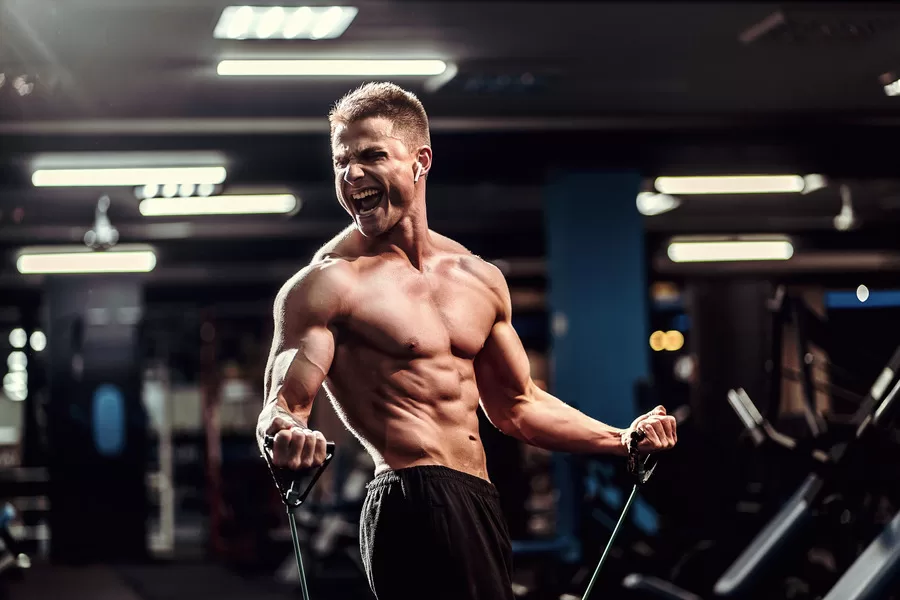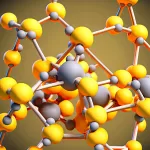
Muscles are trained when we run, lift weights, or even carry groceries. They stretch, but each time they recover they become a little stronger.
Let’s figure out how muscles grow and what is needed for this.
What are Muscles and How Do They Work?
Muscles are a vital component of the human body, acting as the engine for all movement and physical activity. They are made up of specialized cells called muscle fibers, which have the unique ability to contract and relax. This ability is what enables us to move, maintain posture, and circulate blood throughout our bodies.
Types of Muscles
There are three main types of muscles in the body:
- Skeletal Muscles: These are the muscles we most commonly think about. They are attached to bones by tendons and can be controlled voluntarily. Each time you walk, lift objects, or write something down, you are using skeletal muscles.
- Smooth Muscles: These muscles are found in the walls of hollow organs such as intestines, blood vessels, and the bladder. They work involuntarily and are responsible for functions like moving food through the digestive system and regulating blood pressure.
- Cardiac Muscle: The heart is made of this special type of muscle which works continuously and rhythmically, contracting the heart to pump blood. Like smooth muscles, cardiac muscle works involuntarily.
How Muscles Work
Muscles work by receiving signals from the nervous system. The basic mechanism involves:
- Stimulation: A nerve impulse stimulates the muscle fibers, causing a change in the muscle cell’s electrical balance.
- Contraction: This change triggers the muscle fibers to slide against each other, shortening the muscle — this is called contraction. For skeletal muscles, this contraction results in the movement of bones or skin.
- Relaxation: Once the impulse ends, the muscle fibers relax and lengthen to their original state.
This process of contraction and relaxation is powered by a series of biochemical reactions within the muscle cells, primarily involving the molecules ATP (adenosine triphosphate), calcium ions, and proteins called actin and myosin.
Muscle Growth and Repair
Muscle growth, or hypertrophy, occurs when muscle fibers are subjected to stress, such as exercise. In response, they experience small levels of damage. The body repairs this damage and adapts by adding more protein strands to muscle fibers, making them thicker and stronger.
Proper nutrition, especially adequate protein intake, and rest are critical for muscle repair and growth. Failure to rest and recover can lead to overtraining and injuries.
Muscles are an intricate and essential part of the human body, enabling movement, stability, and vital bodily functions. Understanding how they work not only helps us appreciate the complexity of our own bodies but also guides how we exercise, recover, and maintain muscle health. Whether voluntary or involuntary, each muscle type plays a crucial role in our daily lives and overall well-being.
Myofibrils
Zoom into each muscle fiber, and you’ll find the real movers, called myofibrils. These are slender threads filled with the machinery necessary for your muscles to contract. They are like the internal mechanism of a watch: they are precise and necessary for movement.
Actin and Myosin
Within these myofibrils are two vital proteins, actin and myosin. Picture them as two friends holding hands and then letting go in a coordinated dance. This dance is what pulls your muscles together and then relaxes them, allowing you to move with ease.
ATP
For all this action, muscles need energy. Enter ATP (adenosine triphosphate), the spark of every movement. It’s like the battery that keeps your muscles working, providing the energy for that dance between actin and myosin.
Nerves
Imagine nerves as the conductors of an orchestra, sending out signals at just the right time to create beautiful movement. These nerves tell your muscles when it’s time to contract and how strong the movement should be. They’re the communication line between your brain’s command and your muscle’s action.
Blood Vessels
Your muscles are always working, even when you’re at rest. To do their job, they need a constant supply of nutrients and oxygen. Blood vessels are the highways that deliver these essential substances, ensuring your body is well-fed and ready to go.
Connective Tissue
Last but not least, muscles are surrounded and supported by connective tissue. It provides structure and support, holds everything in place, and helps transform the force you create into movement.
It’s a complex system that allows you to run, jump, and even just wave your hand. So, the next time you’re on the move, give thanks for the incredible work your muscles do!
Effective Muscle Nourishment
The path to increasing muscle mass is more than just physical exertion; This means a balanced diet, targeted rest and quality training. But what is considered a “balanced diet” for athletes?
- Protein. Proteins are master muscle builders, weaving amino acids into your muscle tissue in complex ways. After hard work, they restore frayed edges and increase muscle stability and strength. Proteins can greatly help you see results faster after your first workouts.
- Carbohydrates. Carbohydrates set a steady pace for endurance and recovery. They replenish your glycogen stores, your energy stores, keeping you in the rhythm of your next performance. Choose complex carbohydrates, such as whole grains and legumes, which release energy in a smooth, sustained rhythm rather than a fleeting one.
- Fats. Fats provide depth and balance to your body’s nutritional needs by supporting cell growth, hormone production, and nutrient absorption. Use unsaturated fats found in nuts, seeds and fish, which promote stable, healthy performance.
- Micronutrients. Micronutrients that perform their important role by directing your body’s physiological responses. They help contract muscles, strengthen bones and transport oxygen. Their presence may not be as loud as macronutrients, but their influence determines overall performance. Your plate should be colorful and full of different fruits and vegetables.
Rest and Recovery
Rest is important for building muscle mass, although you may think the opposite. It is a gesture that allows the body to recover and grow. Thoughtful rest and recovery, including days of sleep and active pastime, ensures that the muscle growth process is high-quality and correct.
When and how to eat to benefit your muscles
It all starts with understanding your basal metabolic rate (BMR), which is the energy your body needs at rest to maintain life-sustaining processes. Precisely calculated using scientific formulas, BMR serves as the basis of your daily calorie needs. However, this is only the starting point for muscle growth.
Consider your total daily energy expenditure (TDEE), which includes all the calories you burn, from routine activities to structured workouts. If your goal is to build muscle, try to consume slightly more than your TDEE, creating a calorie surplus. This extra energy serves as a catalyst for muscle recovery and growth after a workout. The surplus should be modest to avoid excessive fat gain, often ranging from 250-500 extra calories per day. However, this is not about indiscriminate eating; it’s about choosing nutrient-rich sources that meet your body’s needs.
It’s not only what you eat that matters, but also when and how. Consuming protein and carbohydrates post-workout maximizes muscle recovery and growth, acting almost like a recovery and refueling mechanism. Eating regularly throughout the day ensures a constant supply of nutrients, preventing low energy levels and supporting ongoing muscle recovery. This nutritional strategy is like a well-orchestrated symphony, with each nutrient playing its role at the right time.
At its core, building muscle is a complex interplay of adequate caloric intake, macronutrient balance, and mindful eating, all tailored to your unique physiological needs and training regimen. It is an evolving process that requires mindfulness and flexibility, but with enormous rewards in strength, health and well-being.
Beginner Mistakes when Building Muscle
One of the first mistakes many newbies make is not asking for help. Don’t be shy about asking trainers or more experienced gym goers for advice.
Another common mistake is ignoring the warm-up. Going straight to lifting weights is like running without stretching; this can cause injury and is ineffective. Take at least 5-10 minutes to warm up and prepare your muscles. When it comes to lifting weights, putting on too much weight before you’re ready is a no-no. Instead, start with lighter weights and focus on your form, gradually increasing the weight as you get stronger.
Hydration is often overlooked. Water is essential for your body. It helps transport nutrients to muscles, lubricates joints, and helps you maintain energy and focus. Ignoring hydration can lead to decreased performance and slower recovery. Keep a water bottle handy and take regular sips.
Finally, one of the biggest mistakes in the gym is comparing yourself to others. Don’t compare your beginning to someone else’s middle. Focus on your path, celebrate your progress and keep moving forward. Everyone starts somewhere, and over time, with patience and avoiding these common mistakes, you will see your own growth and improvement.
By recognizing and avoiding these common mistakes, your journey to building muscle can become more effective and enjoyable.
Varied Workouts for Better Muscle Growth
Your muscles love variety. Mixing in different types of workouts, like stretching and cardio, can really boost your muscle growth and overall fitness. Here’s how they help and why they’re important.
Stretching for Flexibility and Recovery
Stretching keeps your muscles long and flexible. This is important because it helps you move better and prevents injuries. After lifting weights, your muscles can get tight. Stretching helps loosen them up and reduce soreness. It’s like a nice relaxing massage after a hard day at work.
Cardio for Heart Health and Endurance
Cardio exercises like walking, running, or biking make your heart strong and increase your stamina. This means you won’t get tired as quickly when lifting weights or doing other exercises. A strong heart pumps blood better, which brings oxygen and nutrients to your muscles, helping them grow. But like any good thing, balance is key! You don’t want to do that much cardio. The right amount will help you stay lean and show off the muscles you’ve been working hard to build.
Including stretching and cardio in your routine, along with weight lifting, gives you a well-rounded approach. It’s like eating a balanced diet instead of just one food all the time. Your muscles get all kinds of benefits, from endurance and flexibility to strength and power. So, stretch to stay limber, do some cardio to keep your heart healthy, and lift weights to build those muscles. Together, they make a great team for your fitness goals!
Conclusion
Contraction, energy and recovery drive your every move. Protein strengthens your muscles, carbohydrates give you energy, and fats strengthen your muscles. Synchronize your meals with your workouts to increase endurance and muscle synthesis. Combine stretching, cardio and strength training for a balanced physique. Make gradual progress in your weightlifting, prioritize recovery, and drink more fluids to improve your results.
FAQs
Beginners should consider changing their workout routine every 4 to 6 weeks to avoid plateaus, keep the workouts challenging, and ensure continued progress.
Lighter weights allow beginners to focus on learning the correct form, prevent overexertion, and reduce the risk of injury while gradually building strength and endurance.
Rest is crucial for recovery, allowing muscles to repair and grow stronger. Beginners should ensure they have at least one full rest day per week and avoid overworking the same muscle groups consecutively.
Warming up prepares the muscles for the workout ahead, increases blood flow, reduces the risk of injury, and enhances overall workout performance.







